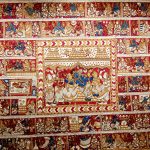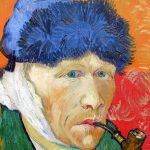Hello everyone! After Zürich, the most famous city in Switzerland would be Geneva. However, it is the most populous city of Romandy, the French-speaking part of Switzerland. Considering it’s so close to France, the official language there is french.
Since it’s the second most popular city in Switzerland, there is direct train from Zürich to Geneva, and it takes around 2h 45 mins. What’s more, the public transport in Geneva is very convenient, but in the main train station, there are more than one bus or tram stop. You should read carefully the board in front of the train station and check which stop that the bus or tram you want take stops at. It might be right in front of you, or you need to turn right when you come out of the main entrance of the train station and then right again at the crossroad. I don’t really remember clearly how many stops there are, but don’t just go around because it’s really complicated.
If you ask me what is famous in Geneva or what to see there, I think according to my experience, I would come up with four themes: 1, Big Fountain and Flower Clock. 2, Protestant Reformation. 3, International Organizations. 4, Art.
Now I’ll introduce to you according to the four themes, some places you must see or you might be interested in.
Geneva Lake
The big fountain and flower clock are in and close to Geneva lake. I do suggest that you should go on a sunny day, otherwise even if the fountain is on you will have a view like the fifth picture above lol.
The big fountain
The big fountain, in french Jet d’Eau, is one of the city’s most famous landmarks, being featured on the city’s official tourism web site and on the official logo for Geneva’s hosting of the 2008 UEFA Championships. Situated at the point where Lake Geneva empties into the Rhône, it is visible throughout the city and from the air, even when flying over Geneva at an altitude of 10 kilometers.
According to Wikipedia, “Five hundred liters of water per second are jetted to an altitude of 140 meters by two 500 kW pumps, operating at 2,400 V, consuming one megawatt of electricity. The water leaves the nozzle at a speed of 200 kilometres per hour. Diameter of the nozzle is exactly 10 cm. Maximum height of water jet is about 140 meters above water level. When it is in operation, at any given moment there are about 7,000 liters of water in the air. Unsuspecting visitors to the fountain, which can be reached via a stone jetty from the left bank of the lake, may be surprised to find themselves drenched after a slight change in wind direction.”
Le Jet d’eau, Genève (140 m) > Big Ben, London (96 m) > Statue of Liberty, New York (93 m) > Tower of Pisa, Pisa (55.8 m) > Arch of Triumph, Paris (50 m).
Operationing times:
- From 16th September to 3rd November: Monday-Thursday, from 9:00 – sunset. Friday, Saturday, Sunday, from 10:00 – 22:30 (with illuminations)
- From 4th November to 2nd March: Monday – Sunday from 10:00 am to 4.00 pm
- Summer: Monday – Sunday 9:00 – 23:15.
The flower clock
Geneva’s “L’horloge fleurie” was created in 1955 as a symbol of the city’s watchmakers and dedication to nature. Its second hand is the longest in the world at 2.50 meters. It is situated at the western edge of the Jardin Anglais. Usually, around 6500 flowers and shrubs are used as decoration for this clock. The decoration is changed each time the seasons of the year change.
Protestant Reformation
The Protestant Reformation, often referred to simply as the Reformation was a schism from the Roman Catholic Church initiated by Martin Luther and continued by John Calvin, Huldrych Zwingli, and other early Protestant Reformers in 16th century Europe.
According to Wikipedia, Voltaire wrote about Calvin, Luther and Zwingli, “If they condemned celibacy in the priests, and opened the gates of the convents, it was only to turn all society into a convent. Shows and entertainments were expressly forbidden by their religion; and for more than two hundred years there was not a single musical instrument allowed in the city of Geneva. They condemned auricular confession, but they enjoined a public one; and in Switzerland, Scotland, and Geneva it was performed the same as penance.
At the centre of the Reformation Wall are statues to William Farel, John Calvin, Theodore Beza, and John Knox. The Christogram can be seen below the statues.
In Geneva, you can definitely see the influence of the Reformation, for example, the University of Geneva, which was founded by Calvin, and especially in St. Pierre Cathedral, where Calvin preached. However, don’t worry if you are not interested in religion or reformation, Climb up the two tall towers of St. Pierre Cathedral with long spiral staircase to get an ultimate 360° view on the whole Geneva and Geneva lake with it’s monumental Jet d’Eau. (However, when I went there, somehow the fountain stopped working……) The two towers are the North and South tower and if you think visiting both towers is too tiring, visit South tower in the good weather, as it has an open air balcony where you can walk freely, with direct views over the lake, while North tower’s top room is a spacious wooden room with closed windows, thus is preferred in a rainy weather.
The Cathedral
Opening hours of Cathedral:
- 1st October – 31st May: Mon-Sat: 10am – 5:30pm. Sunday: 12pm – 5:30pm
- 1st June – 30th September: Mon-Sat: 9 am – 6:30pm. Sunday: 12pm – 6:30pm
- Last entry to the tower half an hour before cathedral’s closing time.
Entry to the cathedral is free of charge
The view from the towers
Opening hours of towers:
- 1st October – 31st May: until 5pm
- 1st June – 30th September: until 6pm
- During the concert in Cathedral (mostly summer), entry to towers is closed.
Entrance for the towers is CHF 5 for adults and CHF 2 for children (6-16). Buy the tickes from the reception inside the cathedral at the end on the left. Once you enter the tower, just follow the signs and you will easily find your way in and between the towers.
John Calvin’s triangular stool
St. Pierre Cathedral is famous for being a place where John Calvin worked. You can see the triangular stool, where he reportedly used to sit, just next to the Pulpit.
On your way to the cathedral, Ancien arsenal
The international organizations
Geneva is a worldwide center for diplomacy due to the presence of numerous international organizations and it is the city that hosts the highest number of international organizations in the world. It is also the place where the Geneva Conventions were signed, which chiefly concern the treatment of wartime non-combatants and prisoners of war.
Geneva is the European headquarters of the United Nations, in the Palace of Nations Building. Several agencies are headquartered at Geneva, including the United Nations High Commissioner for Refugees (UNHCR), the UN Office of the High Commissioner for Human Rights (OHCHR), the World Health Organization (WHO), the International Labour Organization (ILO), International Telecommunication Union (ITU), the International Baccalaureate Organization (IBO) and the World Intellectual Property Organization (WIPO).
Apart from the UN agencies, Geneva hosts many inter-governmental organizations, such as the World Trade Organization (WTO), World Meteorological Organization (WMO), the World Economic Forum (WEF), the International Organization for Migration (IOM), the International Federation of Red Cross and Red Crescent Societies (IFRC) and the International Committee of the Red Cross(ICRC).
For tourists, I guess the most famous would be the Palace of Nations Building and the International Committee of the Red Cross(ICRC) Museum.
Palace of Nations Building and ICRC Museum
Unfortunately, you can’t enter Palace of Nations Building unless you’ve booked a tour in advance. For more info about tours please click here. (Reservations are compulsory as of 15 people. The Visitors’ Service does not take reservations for less than 15 people.)
Do pay attention to the broken chair sculpture when you visit the Palace of Nations Building. (I don’t think you can miss it though) It is a 12-meter high monumental sculpture in wood by the Swiss artist Daniel Berset, constructed by the carpenter Louis Genève. It depicts a giant chair with a broken leg and stands across the street from the Palace of Nations, symbolizing opposition to land mines and cluster bombs, and acting as a reminder to politicians and others visiting Geneva.
For the International Committee of the Red Cross(ICRC) Museum, you can buy tickets on site and if you need more info concerning opening hours, ticket prices, guided tours please click here. The permanent exhibition includes Chamber of witnesses, Defending human dignity, Restoring Family Links and Reducing natural risks.
Musée Ariana
This museum is devoted to ceramic and glass artwork, and contains around 20,000 objects from the last 1,200 years, representing the historic, geographic, artistic and technological breadth of glass and ceramic manufacture during this time. The collection is the only one of its kind in Switzerland. It’s also entry free to the permanent collection.
Opening hours:
Open daily 10-18 hours (Tuesday to Sunday). Closed on Mondays.
Musée d’art et d’histoire
It is the largest museum in Geneva, The Art and History Museum is veritable catalogue of western culture with over one million pieces in its collection organized in three different wings. The Archeology wing contains relics from ancient Egypt, Greece and Rome. The Fine Arts wing houses paintings from the Renaissance onward including works by Van Gogh and Renoir. Finally, the Applied Arts wing features furniture, weapons and other articles of daily life from the Middle Ages.
Opening hours: 10:00 – 18:00. Closed on Mondays.
Admission fee: Free. 5 CHF for temporary exhibitions.
Actually, I have to say the website is really……not user-friendly…..It’s in french and you can’t even change the language……However, fortunately, I used my instinct of french and found a visitor guide in English. Although it doesn’t say much about the masterpieces, it does give a detailed floor plan.
Basically there are 5 levels, level 0 and 1 – Applied Arts. Level 2 – Fine Arts. Level -1 – Archaeology. Level -2 – Regional Archaeology.
Of course there are paintings by Van Gogh, Monet, Cézanne, Picasso, and many more, but the painting that impressed me the most is The Miraculous Draught of Fishes by Konrad Witz. It’s actually not the painting that impressed me the most but the technology they use (X-ray I think) to show how the painting was painted and how were the changed made. However, again, everything in french……
Whether you are interested in beautiful scenery, mechanic watches, religion, history, politics, peace or art, I believe you will find something to see and to do in Geneva. 🙂












































































































